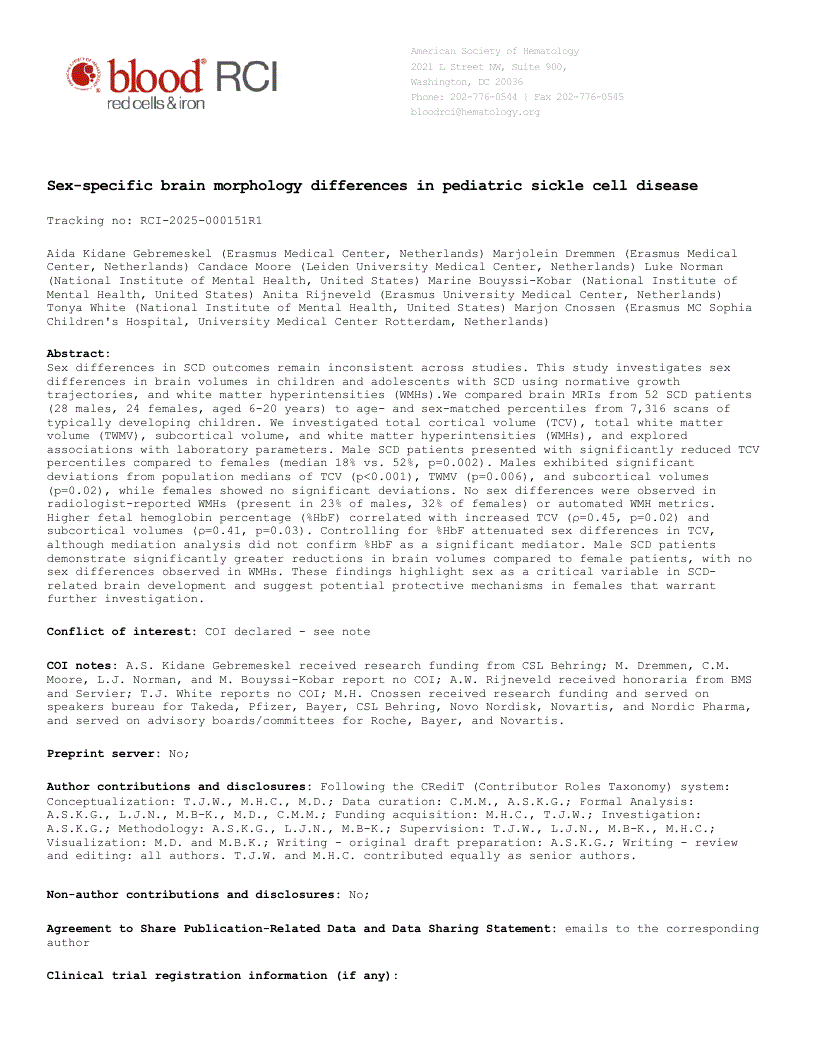Key Points:
Normative modelling revealed males with SCD had reduced brain volumes vs. controls, while females maintained normal volumes.
Higher fetal hemoglobin (%HbF) correlated with greater cortical and subcortical brain volumes in pediatric SCD patients.
Abstract
Sex differences in SCD outcomes remain inconsistent across studies. This study investigates sex differences in brain volumes in children and adolescents with SCD using normative growth trajectories, and white matter hyperintensities (WMHs).We compared brain MRIs from 52 SCD patients (28 males, 24 females, aged 6-20 years) to age- and sex-matched percentiles from 7,316 scans of typically developing children. We investigated total cortical volume (TCV), total white matter volume (TWMV), subcortical volume, and white matter hyperintensities (WMHs), and explored associations with laboratory parameters. Male SCD patients presented with significantly reduced TCV percentiles compared to females (median 18% vs. 52%, p=0.002). Males exhibited significant deviations from population medians of TCV (p<0.001), TWMV (p=0.006), and subcortical volumes (p=0.02), while females showed no significant deviations. No sex differences were observed in radiologist-reported WMHs (present in 23% of males, 32% of females) or automated WMH metrics. Higher fetal hemoglobin percentage (%HbF) correlated with increased TCV (ρ=0.45, p=0.02) and subcortical volumes (ρ=0.41, p=0.03). Controlling for %HbF attenuated sex differences in TCV, although mediation analysis did not confirm %HbF as a significant mediator. Male SCD patients demonstrate significantly greater reductions in brain volumes compared to female patients, with no sex differences observed in WMHs. These findings highlight sex as a critical variable in SCD-related brain development and suggest potential protective mechanisms in females that warrant further investigation.
Author notes
These authors contributed equally to the study.
Data sharing statement For original data, please contact m.cnossen@erasmusmc.nl
The BRICK multicenter study group is acknowledged in full in the Acknowledgements section.

